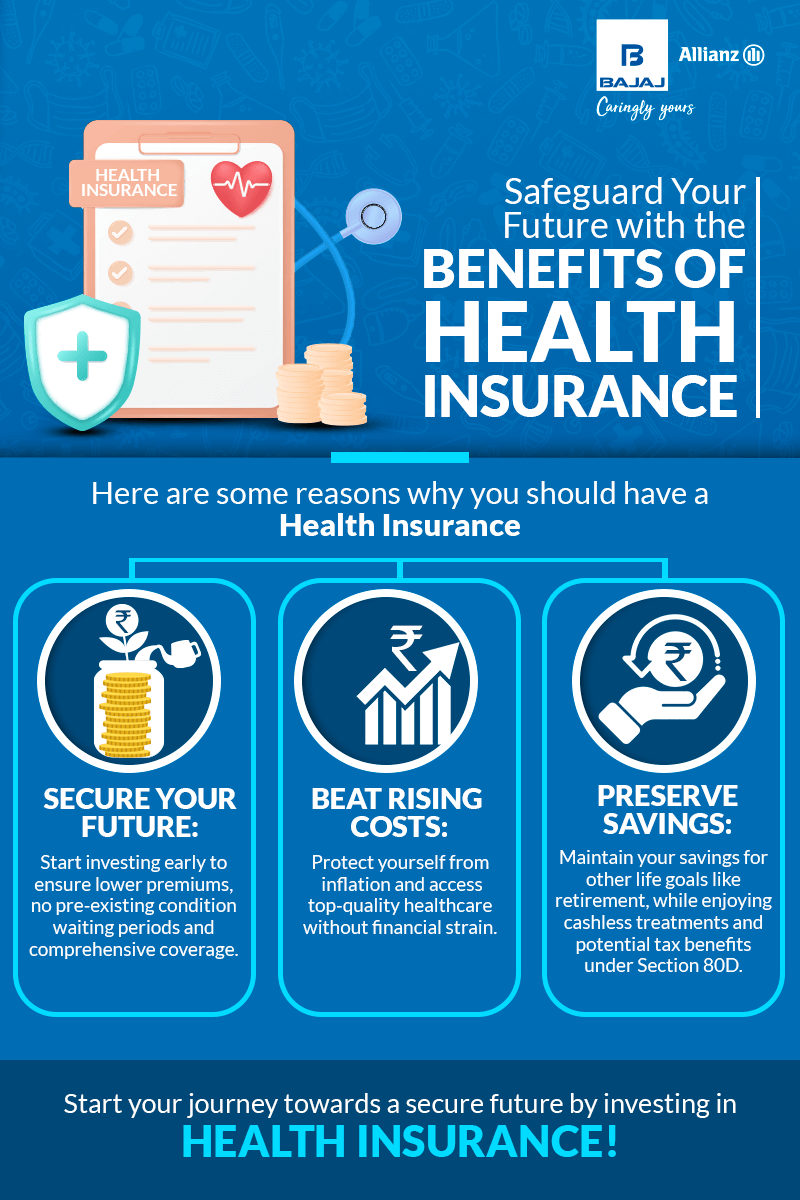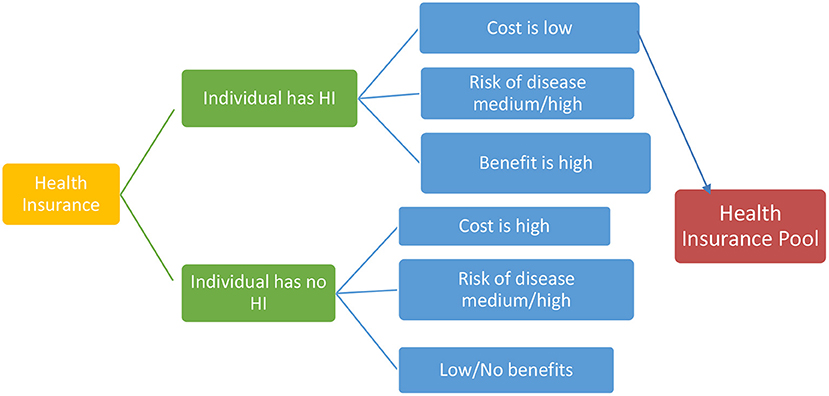How Medicare Advantage Agent can Save You Time, Stress, and Money.
The smart Trick of Medicare Advantage Agent That Nobody is Talking About
Table of ContentsMedicare Advantage Agent Fundamentals ExplainedSome Known Incorrect Statements About Medicare Advantage Agent Some Known Incorrect Statements About Medicare Advantage Agent

follows from puzzling the relatively young age account of the without insurance with the better wellness, typically, of younger persons. This covers the web link between health and wellness status and wellness insurance coverage. For those without access to work environment health insurance policy, poor health is a prospective obstacle to purchasing nongroup protection because such insurance coverage might be very priced, leave out pre-existing conditions, or be just not available. The variety of uninsured Americans is not especially big and has not transformed in the last few years. Seven out of 10 respondents in a country wide depictive survey thought that less Americans lacked health insurance policy than really do(Fronstin, 1998). Approximately half(47 percent )thought that the number of individuals without wellness insurance coverage reduced or stayed constant over the last half of the last years(Blendon et al., 1999). This decline of practically 2 million in the variety of individuals 'without insurance (a decrease
of about 4 percent)is definitely a favorable modification. With a softer economy in 2000 the most recent reported gains in insurance coverage may not proceed(Fronstin, 2001 ). The decline in the variety of without insurance will not continue if the economic climate remains slow and health treatment prices continue to surpass rising cost of living. This is due to the fact that the information were accumulated for a period of strong financial efficiency. Of the estimated 42 million people that were uninsured, almost concerning 420,000(concerning 1 percent)were under 65 years old, the age at which most Americans come to be eligible for Medicare; 32 million were grownups between ages 18 and 65, about 19 percent of all grownups in this age; and 10 million were children under 18 years old, regarding 13.9 percent of all children (Mills, 2000). These quotes of the number of persons without insurance are created from the yearly March Supplement to the Existing Population Study (CPS), carried out by the Demographics Bureau. Unless otherwise kept in mind, nationwide estimates of people without medical insurance and proportions of the populace with various kinds of protection are based upon the CPS, the most extensively utilized source of price quotes of insurance coverage and uninsurance rates. These studies and the quotes they produce are described briefly in Table B. 1 in Appendix B - Medicare Advantage Agent. These studies differ in dimension and tasting methods, the concerns that are asked about insurance coverage
The 6-Minute Rule for Medicare Advantage Agent
coverage, and the time period over which insurance protection or uninsurance is gauged(Lewis et al., 1998, Fronstin, 2000a ). Still, the CPS is particularly useful because it produces annual quotes fairly swiftly, reporting the previous year's insurance protection estimates each September, and because it is the basis for a constant collection of price quotes for greater than two decades, enabling for evaluation of trends in insurance coverage in time.

The Greatest Guide To Medicare Advantage Agent
Over a three-year period beginning early in 1993, 72 million individuals, 29 percent of the united state populace, lacked protection for a minimum of one month. Within a solitary year(1994), 53 million individuals experienced at least a month without coverage(Bennefield, 1998a). 6 out of every go to website 10 without insurance adults are themselves utilized. Working does enhance the probability that one and one's household participants will have insurance coverage, it is not a warranty. Even participants of family members with 2 permanent wage earners have virtually a one-in-ten possibility of being without insurance (9.1 percent uninsured price)(Hoffman and Pohl, 2000 ). The partnership in between medical insurance and accessibility to care is well developed, as recorded later in this phase. The connection in between health insurance coverage and health outcomes is neither useful reference direct neither straightforward, a considerable clinical and health services study literature web links wellness insurance coverage
to improved access to care, better quality, and improved enhanced individual population health wellness. For example, the second report, on personal wellness outcomes for without insurance grownups, is stood for by the inner circle of the number, while the 3rd report, on family members well-being, incorporates the subjects of the second report yet emphasizes a various system of analysis, particularly, the family members. The sixth report in the series will certainly present details concerning strategies and initiatives embarked on in your area, statewide, or across the country to address the absence of insurance and its unfavorable impacts. Levels of evaluation for taking a look at the effects of uninsurance. This conversation of medical insurance protection concentrates largely on the U.S. populace under age 65 due to the fact that virtually all Americans 65 and older have Medicare or various other public coverage.
Moreover, it concentrates especially on those with no health insurance policy for any length of time. The troubles encountered by the underinsured remain in some areas comparable to those dealt with by the uninsured, although they are normally much less severe. Uninsurance and underinsurance, nonetheless, involve distinctly different plan concerns, and the approaches for resolving them might differ. Throughout this research study and the five records to adhere to, the major emphasis is on individuals without medical insurance and therefore no support in paying for health treatment past what is offered through charity and safety internet establishments. Medical insurance is a powerful variable impacting receipt of treatment since both clients and physicians react to the out-of-pocket cost of services. Medical insurance, nevertheless, is neither necessary neither adequate to gain access to medical services. The independent and direct result of health and wellness
insurance coverage protection access to health services solutions well established. Others will certainly obtain the wellness treatment they require even without medical insurance, by paying for it expense or seeking it from companies that provide care totally free or at very subsidized rates. For still others, medical insurance alone does not make certain receipt of treatment due to the fact that of other nonfinancial obstacles, such as an absence of health treatment providers in their neighborhood, minimal access to transportation, illiteracy, or etymological and social differences. Official study about without insurance populaces in the United States dates to the late 1920s and early 1930s when the Board on the Price of Treatment created a collection of records about financing medical professional office sees and hospital stays. This issue ended up being prominent as the varieties of clinically indigent climbed up during the Great Anxiety. Empirical researches consistently sustain the web link in between accessibility to care and boosted wellness outcomes(Bindman et al., 1995; Starfield, 1995 ). Having a regular source of care can be thought about a predictor of gain access to, instead of a straight action of it, when wellness end results are themselves used as access signs. This expansion of the concept of access measurement was made by the IOM Committee on Keeping An Eye On Gain Access To to Personal Healthcare Solutions(Millman, 1993, p. Whether or not moms and dads are guaranteed shows up to impact whether or this website not their children obtain treatment along with just how much careeven if the kids themselves have protection(Hanson, 1998). The health and wellness of parents can affect their ability to care for their youngsters and the degree of household tension. Stressing over their youngsters's accessibility to care is itself a source of stress for moms and dads. 3 chapters follow in this record. Chapter 2 offers a summary of how employment-based medical insurance, public programs and private insurance plan operate and connect to supply substantial however insufficient insurance coverage of the U.S. populace. This includes a testimonial of historic trends and public laws impacting both public and exclusive insurance policy, a discussion of the communications among the various types of insurance policy, and an assessment of why people relocate from one program to another or end up
